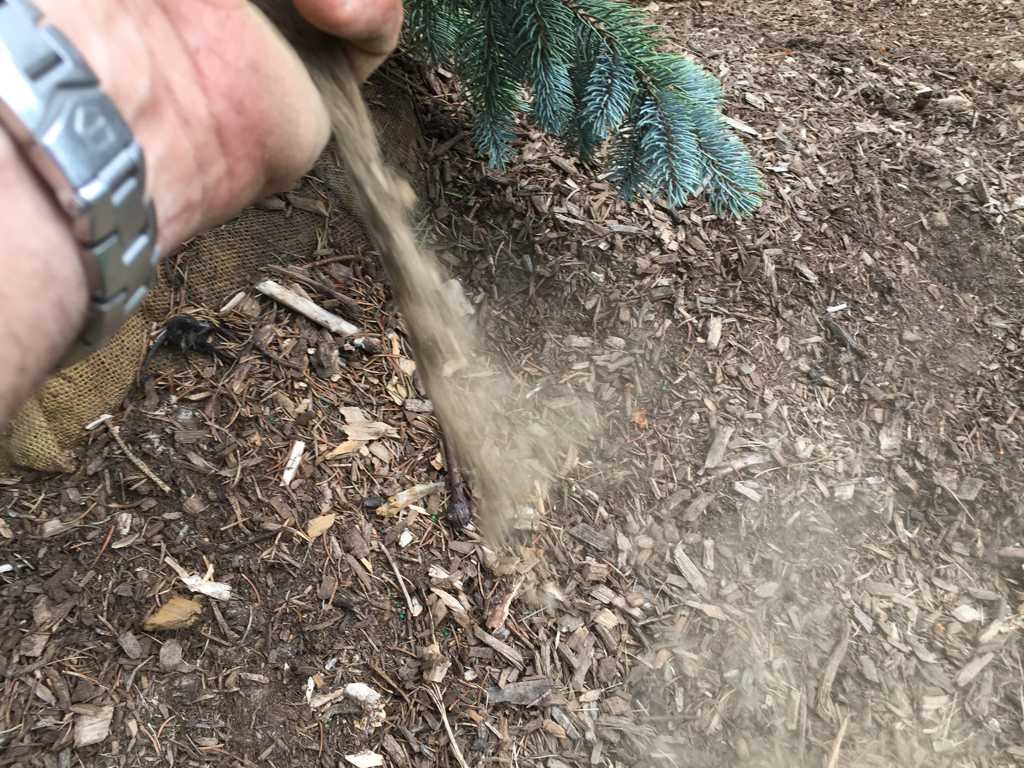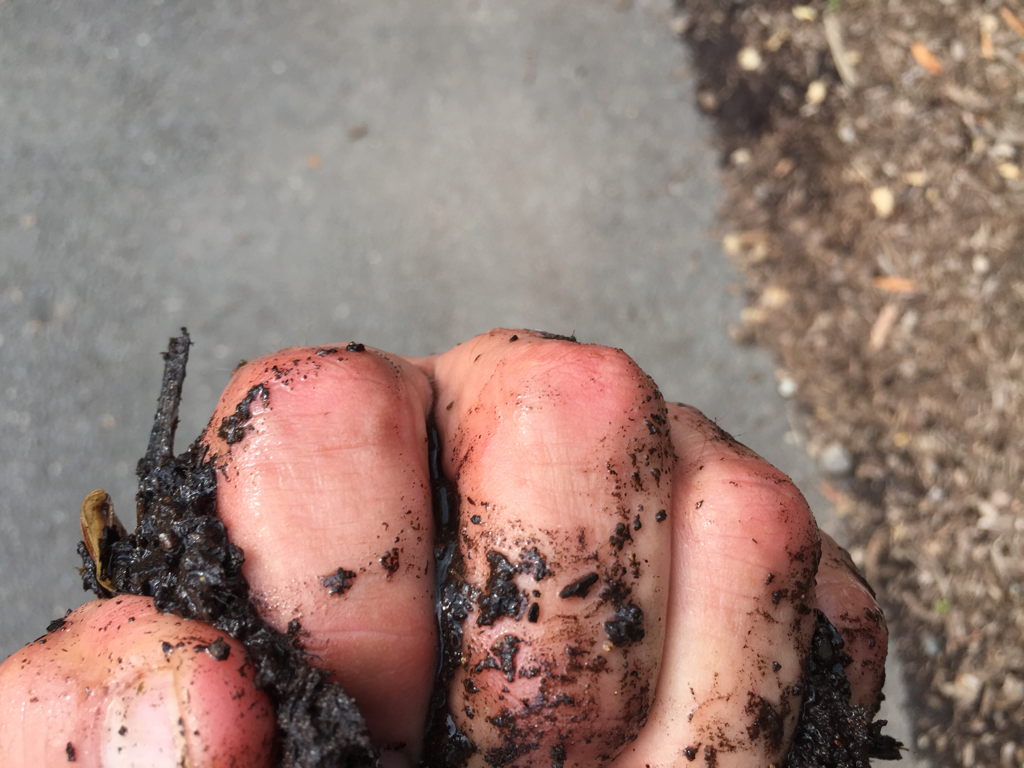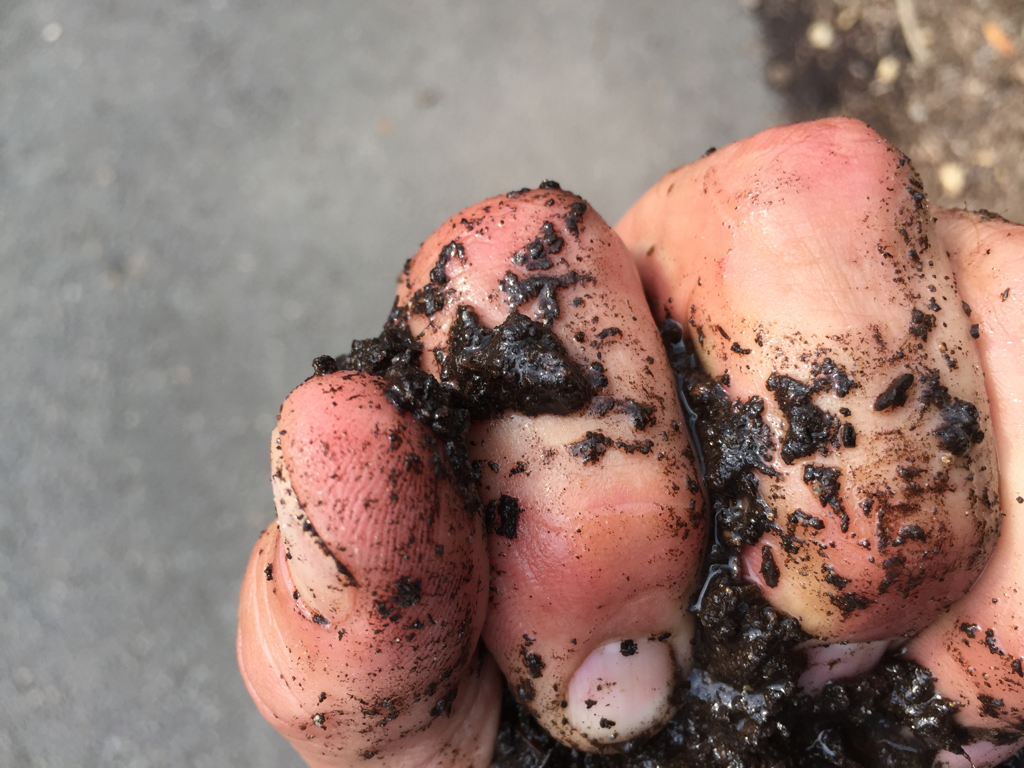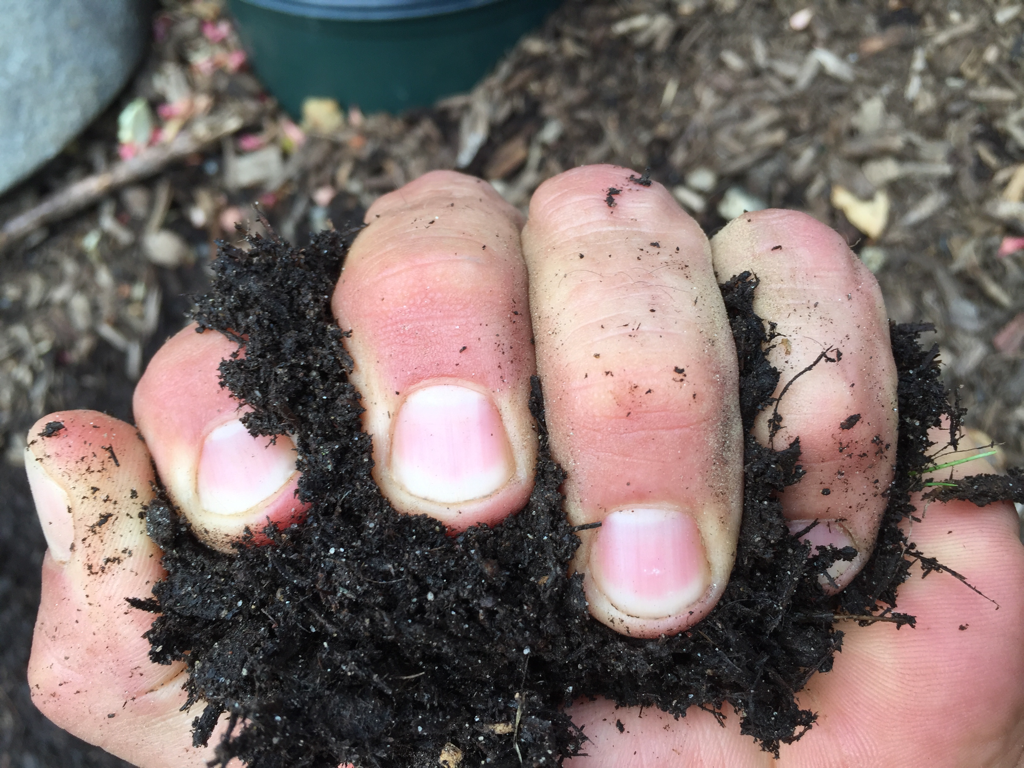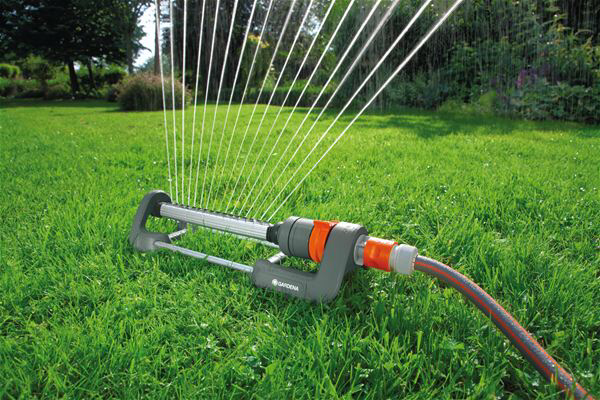THREE TYPES OF SOIL MOISTURE:
Water new plants:
"WHEN THEY NEED TO BE WATERED." There is no schedule and if you water on a schedule it can be problematic, with constantly changing environmental factors will make your plant's watering needs vary from day to day.
Sun, wind, clouds, temperature, the kind of plant and the soil it came with as well as the soil type in the ground it's planted in all gather forces to create the schedule for you to determine if the plant needs water or not.
When fleshy plants lose water the cells lose stiffness and they droop at the tips first (farthest away from the roots) and the suffering works it's way towards the stems as the dessication proceeds from mild to severe. When you notice the droopy look and finally water it the plant becomes more turgid and straightens back up again if you caught it in time. If you didn't, the tips will become tan and crispy when rolled in the palm of your hand. and that tissue will never come back but subsequent foliage should grow past the damage and it will all be forgotten. Unseen roots suffer the same way so their efficiency is reduced.
Woody plants (like a pink dogwood) will not droop for you to notice so easily. Instead, their leaves will suffer the crinkly fate and there might be a few years before the tree looks normal again. Catching up to a hydrated soil ball takes a LONG TIME and over correcting can cause a new set of issues.
Overwatering:
When a plant is overwatered (either by giving too much each time, watering too frequently, or watering too much in a poorly drained soil) the root tips die so the root can't ironically take up water so the plant looks like it needs to be watered. Over watered tissue usually looks darker than under watered tissue with the leaves not crinkly.
"BUT I HAVE AN IRRIGATION SYSTEM!"
This is the root of all evil. Kinda like propping your child in front of the TV and going out for the night. When people have an irrigation system, they don't know their plants. Their system is taking care of the plants, so they don't have to. When they don't have to, they don't. So plants scream out with their symptoms but there is nobody there to hear them. You have to get to know your plants the first year, then you can ignore the watering issue unless its drought time. Then they come back to the nursery where we easily see that the plant was standing in water or looks like it was never watered, always a very uncomfortable conversation because the plant death had absolutely nothing to do with the health of the plant at the time of the purchase. That's when we hear "but I have an irrigation system!"
You have to protect your new plants by getting to know them.
Walk over to that tree you just planted, get on your knees, move the mulch aside and push your thumb against the root ball to see if it's squishy or rock hard. If it's rock hard it means its dry as a bone and you waited way too long to check it. If its squishy that's better but not to the point of having "free water" which is a term I coined years ago. Free water in the soil is water that is excess like a wet kitchen sponge. Squeeze the soil and water comes out between your fingers. This kind of soil moisture kills plants, even plants that like wet soils.
The perfect soil moisture is like a damp kitchen sponge. Squeeze it and no water comes out between your fingers. Roots have air AND water.
"WHEN THEY NEED TO BE WATERED." There is no schedule and if you water on a schedule it can be problematic, with constantly changing environmental factors will make your plant's watering needs vary from day to day.
Sun, wind, clouds, temperature, the kind of plant and the soil it came with as well as the soil type in the ground it's planted in all gather forces to create the schedule for you to determine if the plant needs water or not.
When fleshy plants lose water the cells lose stiffness and they droop at the tips first (farthest away from the roots) and the suffering works it's way towards the stems as the dessication proceeds from mild to severe. When you notice the droopy look and finally water it the plant becomes more turgid and straightens back up again if you caught it in time. If you didn't, the tips will become tan and crispy when rolled in the palm of your hand. and that tissue will never come back but subsequent foliage should grow past the damage and it will all be forgotten. Unseen roots suffer the same way so their efficiency is reduced.
Woody plants (like a pink dogwood) will not droop for you to notice so easily. Instead, their leaves will suffer the crinkly fate and there might be a few years before the tree looks normal again. Catching up to a hydrated soil ball takes a LONG TIME and over correcting can cause a new set of issues.
Overwatering:
When a plant is overwatered (either by giving too much each time, watering too frequently, or watering too much in a poorly drained soil) the root tips die so the root can't ironically take up water so the plant looks like it needs to be watered. Over watered tissue usually looks darker than under watered tissue with the leaves not crinkly.
"BUT I HAVE AN IRRIGATION SYSTEM!"
This is the root of all evil. Kinda like propping your child in front of the TV and going out for the night. When people have an irrigation system, they don't know their plants. Their system is taking care of the plants, so they don't have to. When they don't have to, they don't. So plants scream out with their symptoms but there is nobody there to hear them. You have to get to know your plants the first year, then you can ignore the watering issue unless its drought time. Then they come back to the nursery where we easily see that the plant was standing in water or looks like it was never watered, always a very uncomfortable conversation because the plant death had absolutely nothing to do with the health of the plant at the time of the purchase. That's when we hear "but I have an irrigation system!"
You have to protect your new plants by getting to know them.
Walk over to that tree you just planted, get on your knees, move the mulch aside and push your thumb against the root ball to see if it's squishy or rock hard. If it's rock hard it means its dry as a bone and you waited way too long to check it. If its squishy that's better but not to the point of having "free water" which is a term I coined years ago. Free water in the soil is water that is excess like a wet kitchen sponge. Squeeze the soil and water comes out between your fingers. This kind of soil moisture kills plants, even plants that like wet soils.
The perfect soil moisture is like a damp kitchen sponge. Squeeze it and no water comes out between your fingers. Roots have air AND water.
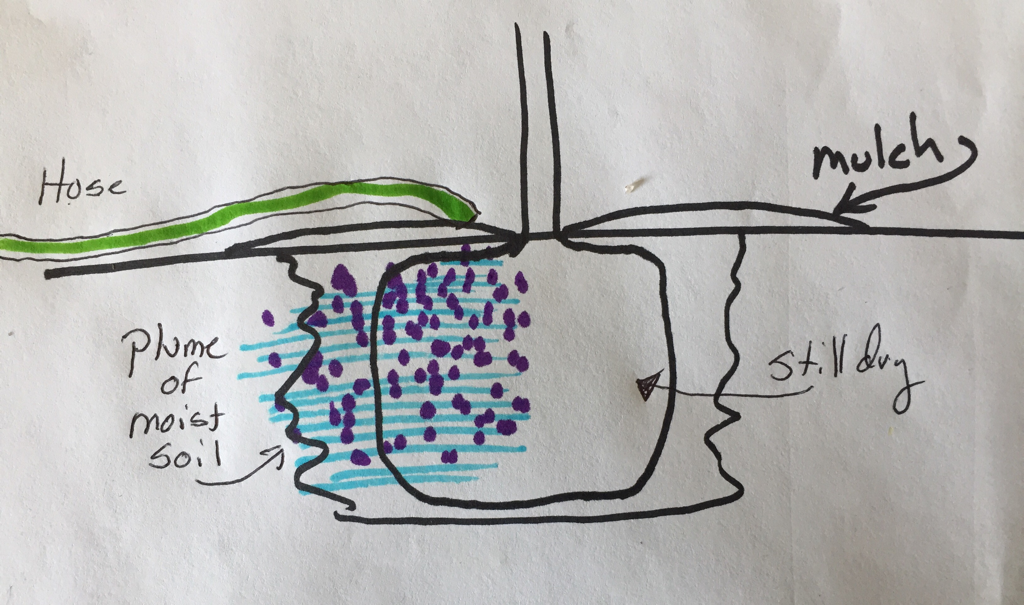
Best way to water larger trees is not to stand there. Place hose at base of tree, turn faucet so it trickles, and leave it there for the appropriate amount of time (summer 2022 I left the hose trickling for 12 hours at two spots for a total of 24 hours per tree for each tree in my yard). Frequency determined by the plant's needs and weather conditions.
PLEASE NOTE: We work hard to take care of our plants here and once the live plant materials are at your house, then it's your turn. We do not guarantee our plant material because we have no control over plant care once it is no longer in our possession.

